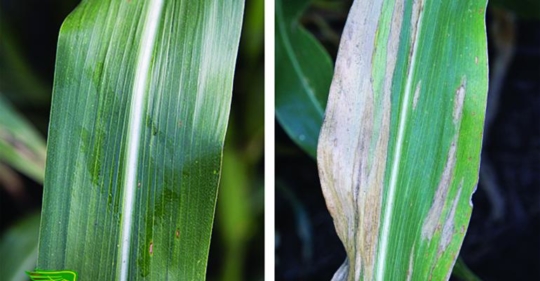Explore our blog featuring articles about farming and irrigation tips and tricks!
Managing Corn Disease: Balance Yield Protection With The Costs Of Control

By: Elton Robinson
With profit margins for corn growing tighter with each USDA Crop Production Report, a producer’s approach to controlling foliar disease is often a balancing act between protecting yield and keeping down costs.
Several diseases can have a negative impact on corn yields, depending on the level of resistance in a product and weather conditions for the pathogen. Properly identifying diseases and knowing when and which fungicide to apply can increase yield potential. In 2017, growers will also have a breeding innovation to help in their fight against corn diseases.
Northern corn leaf blight (NCLB), a primary foliar disease in the Mid-South, is a good example.
“Fungicide applications are effective on the pathogen,” says Trey Price, plant pathologist at the LSU AgCenter-Macon Ridge Research Station at Winnsboro, “but in most cases, fungicide applications are not necessary for NCLB management. This is an area where producers can reduce input costs.
“We scout, and depending on the stage of the crop and prevailing environmental conditions, we make a decision on a weekly, field-by-field basis, as to whether or not to treat. I think that’s the way to approach it, using integrated pest management techniques instead of blanket spraying fungicides.
Stay up to date on all T-L news and get alerts on special pricing!


